- Overview
- Trip Outline
- Trip Includes
- Trip Excludes
- Gallery
- Reviews
- FAQ
- Downloads
Itineraries
Day 1
Early Morning Drive from Kathmandu to Thamdanda (2,326m)
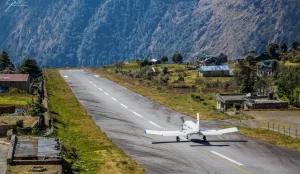
Embark on a scenic drive through lush hills, terraced farmlands, and traditional villages. The journey offers breathtaking views of the Himalayas as you approach Thamdanda, the starting point of your trek.
- Drive duration: 8-10 hours
- Highlights: Picturesque landscapes, passing through traditional settlements, and overnight stay at a cozy teahouse in Thamdanda.
Day 2
Trek from Thamdanda to Phakding (2,640m)
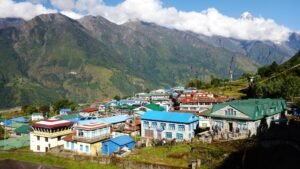
Begin your trek through dense forests and charming Sherpa settlements. The trail descends gradually towards the Dudh Koshi River, where you cross suspension bridges before reaching Phakding.
- Trekking duration: 5-6 hours
- Trekking distance: 10km
- Highlights: First day of trekking, walking through lush forests, crossing scenic suspension bridges, and experiencing Sherpa hospitality in Phakding.
Day 3
Trek from Phakding to Namche Bazaar (3,440m)
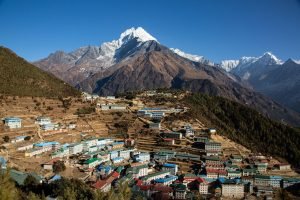
Enter Sagarmatha National Park and trek through rhododendron and pine forests. Cross the famous Hillary Suspension Bridge before tackling a steep ascent to Namche Bazaar, the bustling heart of the Everest region.
- Trekking duration: 5-6 hours
- Trekking distance: 11km
- Highlights: Stunning views of Everest and Lhotse, passing through Sherpa villages, and reaching the vibrant market town of Namche Bazaar.
Day 4
Acclimatization Day at Namche Bazaar

A rest day to adjust to the altitude. Take a short hike to the Everest View Hotel for breathtaking Himalayan vistas or explore Namche’s traditional markets and Sherpa heritage sites.
Highlights: Acclimatization hike with panoramic Everest views, visiting the Sherpa Culture Museum, and relaxing in Namche's lively atmosphere.
Day 5
Trek from Namche to Tengboche (3,870m)
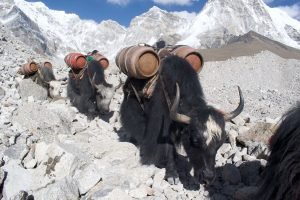
Follow a scenic trail through forests and open ridges, with Everest and Ama Dablam towering ahead. Reach Tengboche, home to the region’s most significant Buddhist monastery.
- Trekking duration: 5-6 hours
- Trekking distance: 10km
- Highlights: Incredible views of Everest, Lhotse, and Ama Dablam, and visiting Tengboche Monastery for a spiritual experience.
Day 6
Trek from Tengboche to Dingboche (4,410m)

Descend through rhododendron forests before crossing the Imja Khola River. The trail gradually ascends towards Dingboche, surrounded by towering peaks.
- Trekking duration: 5-6 hours
- Trekking distance: 12km
- Highlights: Walking along the Imja Valley, crossing scenic bridges, and stunning views of Island Peak and Lhotse.
Day 7
Refreshment Day at Dingboche

An important day for acclimatization. Take an optional hike to Nangkartshang Peak for panoramic views or relax in the village while adjusting to the altitude.
Highlights: Acclimatization hike offering breathtaking Himalayan views and a peaceful day exploring Dingboche.
Day 8
Trek from Dingboche to Lobuche (4,910m)

A challenging yet rewarding trek through glacial valleys and rugged terrain. Pass the Everest Memorial at Thokla Pass, a tribute to climbers who lost their lives on Everest.
- Trekking duration: 5-6 hours
- Trekking distance: 9km
- Highlights: Visiting the Everest Memorial, stunning glacier views, and reaching the high-altitude settlement of Lobuche.
Day 9
Trek from Lobuche to Gorakshep (5,140m) Hike to Everest Base Camp (5,364m)

Follow the Khumbu Glacier towards Gorak Shep before making the final push to Everest Base Camp, where climbers prepare for Everest summits.
- Trekking duration: 7-8 hours
- Trekking distance: 12km
- Highlights: Reaching Everest Base Camp, walking alongside the Khumbu Glacier, and experiencing the world’s highest expedition hub.
Day 10
Trek to Kala Patthar (5,555m) and Back to Pheriche (4,240m)

Begin an early morning ascent to Kala Patthar for the best sunrise views of Everest. Descend through the glacier valley back to Pheriche.
- Trekking duration: 7-8 hours
- Trekking distance: 15km
- Highlights: Stunning golden sunrise over Everest, 360-degree views of the Himalayas, and descending to a lower altitude for a comfortable night’s rest.
Day 11
Trek from Pheriche to Namche Bazaar
Descend through the Imja Valley, retracing your steps past Sherpa villages and monasteries before arriving at Namche Bazaar.
- Trekking duration: 6-7 hours
- Trekking distance: 20km
- Highlights: Passing through Pangboche and Tengboche, crossing scenic trails, and enjoying a relaxed evening in Namche.
Day 12
Trek from Namche to Chaurikharka (2,694m)
Retrace your steps through Sagarmatha National Park and follow a quiet trail towards Chaurikharka, a beautiful village away from the main trekking route.
- Trekking duration: 6-7 hours
- Trekking distance: 14km
- Highlights: Tranquil trails, stunning valley views, and a peaceful stay in a teahouse in Chaurikharka.
Day 13
Trek from Chaurikharka to Thamdanda
A scenic descent through dense forests and Sherpa villages brings you back to Thamdanda, where your trek concludes.
- Trekking duration: 4-5 hours
- Trekking distance: 10km
- Highlights: Walking through lush greenery, reflecting on the trek, and celebrating the completion of an incredible adventure.
Day 14
Drive Back to Kathmandu (1,400m) from Thamdanda
Enjoy the final overland journey through winding mountain roads, returning to Kathmandu with lasting memories of the Himalayas.
Drive duration: 8-10 hours
Highlights: Scenic drive through the countryside, final glimpses of the Himalayas, and returning to the vibrant city of Kathmandu.
-
-
Overland drive from Kathmandu to Thamdanda in a shared jeep, and back as well.
-
Accommodation in teahouses during the trek.
-
All necessary trekking permits (Sagarmatha National Park & Local Sherpa Permit).
-
Experienced English-speaking trekking guide.
-
Porter service (1 porter for every two trekkers).
-
All meals during the trek (breakfast, lunch, and dinner).
-
First aid kit and emergency support.
-
-
International flight fare and airport departure tax.
-
Any beverages, including bottled and boiled water.
-
Travel insurance with high-altitude emergency evacuation coverage.
-
Tips for trekking staff and driver.
-
Nepal Entry Visa (USD 50 for 30 days, USD 125 for 90 days, available on arrival at Tribhuvan International Airport).
-
Personal trekking gear and equipment.
-
Any expenses not mentioned in the inclusions section.
The Everest Base Camp Trek is considered moderately difficult. It requires a good level of fitness and stamina, as you'll be trekking at high altitudes and ascending steep trails. Proper acclimatization and preparation are essential.
The best time for the Everest Base Camp Trek is during the pre-monsoon (spring) season (March to May) and the post-monsoon (autumn) season (September to November). These months offer stable weather conditions, clear skies, and favorable trekking conditions.
The Everest Base Camp Trek typically takes around 12-14 days, including acclimatization days. This allows for a gradual ascent and reduces the risk of altitude sickness.
Altitude sickness, also known as acute mountain sickness (AMS), can occur when ascending to high altitudes too quickly. To prevent AMS, it's important to acclimatize properly by taking rest days, staying hydrated, and ascending gradually. If symptoms worsen, descending to a lower altitude is crucial.
Teahouses or guesthouses are the primary accommodations along the Everest Base Camp Trek. These are basic but comfortable lodges that provide meals and a place to sleep. Facilities may vary, but most teahouses offer twin-sharing rooms with common bathrooms.
You need a Sagarmatha National Park Entry Permit and a Khumbu Pasang Lhamu Rural Municipality Entry Permit. These two permits are mandatory for trekking in the Everest region.
There is no specific age restriction for the Everest Base Camp Trek. However, it's important to consider the physical fitness and endurance of individuals, especially at higher altitudes. Consulting with a healthcare professional is advisable for older or younger trekkers.
Prior trekking experience is not mandatory, but it is recommended. Being physically fit, having experience hiking in varied terrains, and being mentally prepared for the challenges of high-altitude trekking will greatly enhance your experience.
A good level of cardiovascular fitness and stamina is required for the Everest Base Camp Trek. Regular exercise, including cardiovascular workouts and hiking practice, can help prepare your body for the physical demands of the trek.
There are medical clinics and basic emergency facilities available in some villages along the trail. However, it is highly recommended to carry a basic first aid kit and consult with a travel medical professional for personalized advice.
Yes, most teahouses offer charging facilities for a fee. However, the availability of electricity can be limited in some areas, and charging might not be available every day. Carrying spare batteries or a power bank is advisable.
Weather conditions in the Everest region can vary greatly. In the spring and autumn seasons, you can expect mild temperatures during the day, with colder nights at higher altitudes. However, weather conditions can change rapidly, and it's important to be prepared for colder temperatures and occasional rainfall or snowfall.
Yes, there are communication facilities available along the Everest Base Camp trail. Most teahouses have Wi-Fi services, but they may charge a fee for usage. However, the connectivity and speed can be limited, especially at higher altitudes. It's advisable to inform your loved ones that communication may be intermittent during the trek.
Yes, it is possible to hire a guide and porter for the Everest Base Camp Trek. Hiring a guide can provide assistance with navigation, cultural insights, and safety, while a porter can carry your heavy backpack, allowing you to trek with less weight. Hiring them can enhance your trekking experience and support the local community.
The major highlights of the Everest Base Camp Trek include breathtaking views of Mount Everest and other majestic peaks, visiting traditional Sherpa villages, immersing in the Sherpa culture, exploring Buddhist monasteries like Tengboche, trekking through the beautiful Sagarmatha National Park, and standing at Everest Base Camp itself.
Both options are possible. It is feasible to trek independently to Everest Base Camp if you have prior trekking experience, good navigational skills, and are well-prepared. However, joining a guided group trek provides numerous benefits, including a support network, experienced guides, organized logistics, and the opportunity to meet fellow trekkers.
Yes, there are alternative routes and side trips that can be incorporated into the Everest Base Camp Trek. Popular options include adding a trek to Gokyo Lakes, visiting the Everest View Hotel, or taking a detour to the beautiful village of Khumjung. These additions provide additional scenic views and cultural experiences.
Some essential items to pack for the Everest Base Camp Trek include trekking boots, warm clothing layers, a good-quality sleeping bag, a waterproof jacket, gloves, a hat, sunglasses, sunscreen, a water bottle, a headlamp, toiletries, and a first aid kit. It's important to pack light but adequately for changing weather conditions.
The budget for the Everest Base Camp Trek depends on various factors such as the season, accommodation choices, and personal expenses. On average, a budget of around $1,500 to $2,500 USD per person is reasonable to cover permits, food, accommodations, guides/porters (if hired), and miscellaneous expenses.
Respecting the local culture and customs is important during the Everest Base Camp Trek. Some key etiquettes include greeting locals with "Namaste," asking permission before taking photographs, dressing modestly, and respecting religious sites and objects. It's also advisable to follow the guidance of your guide regarding local customs and practices.

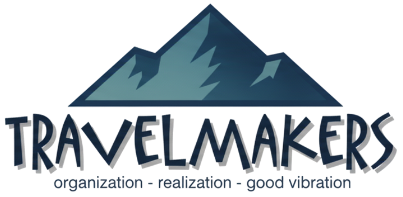







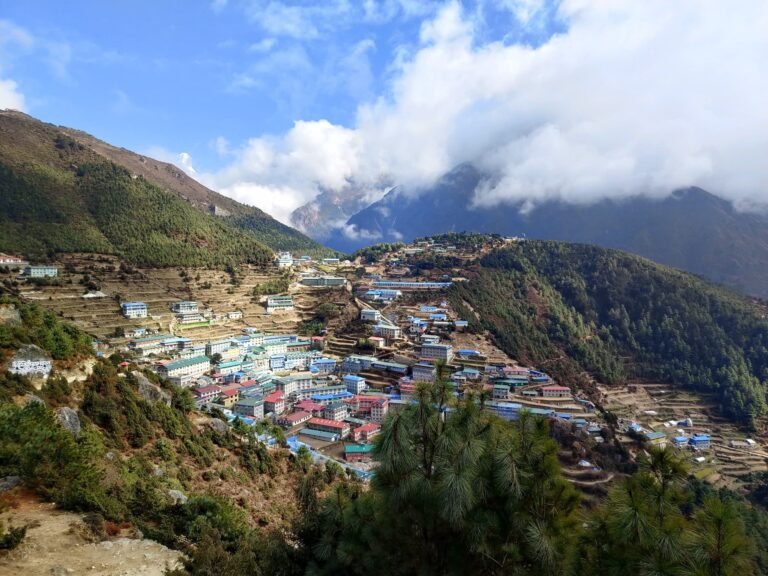







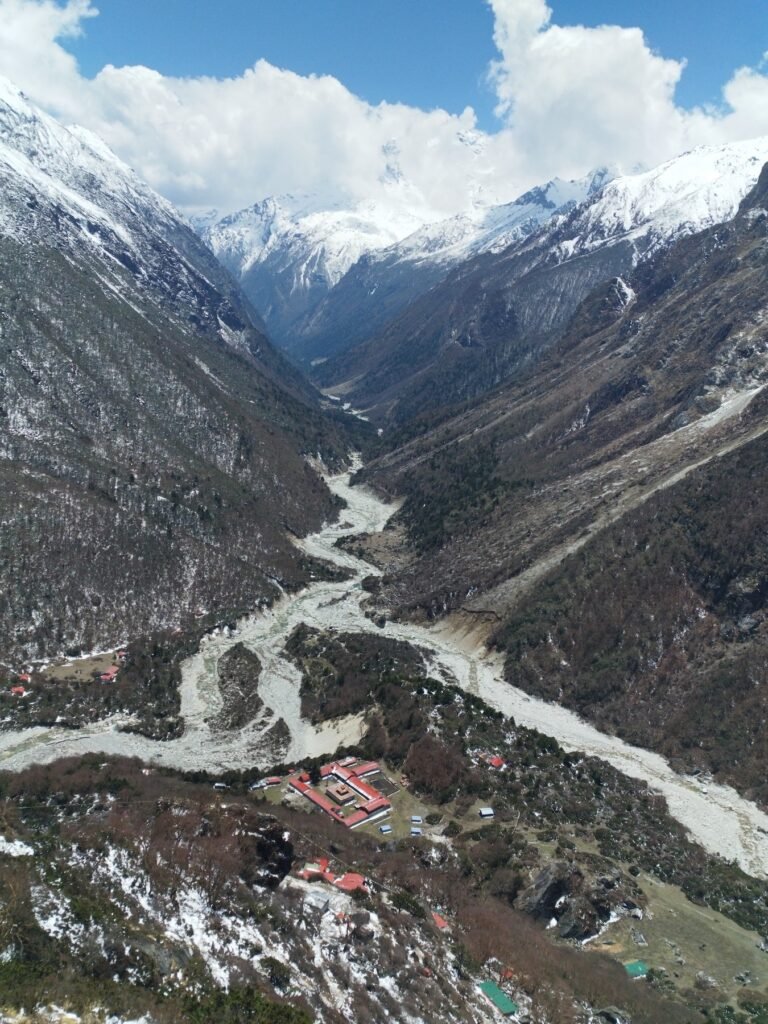
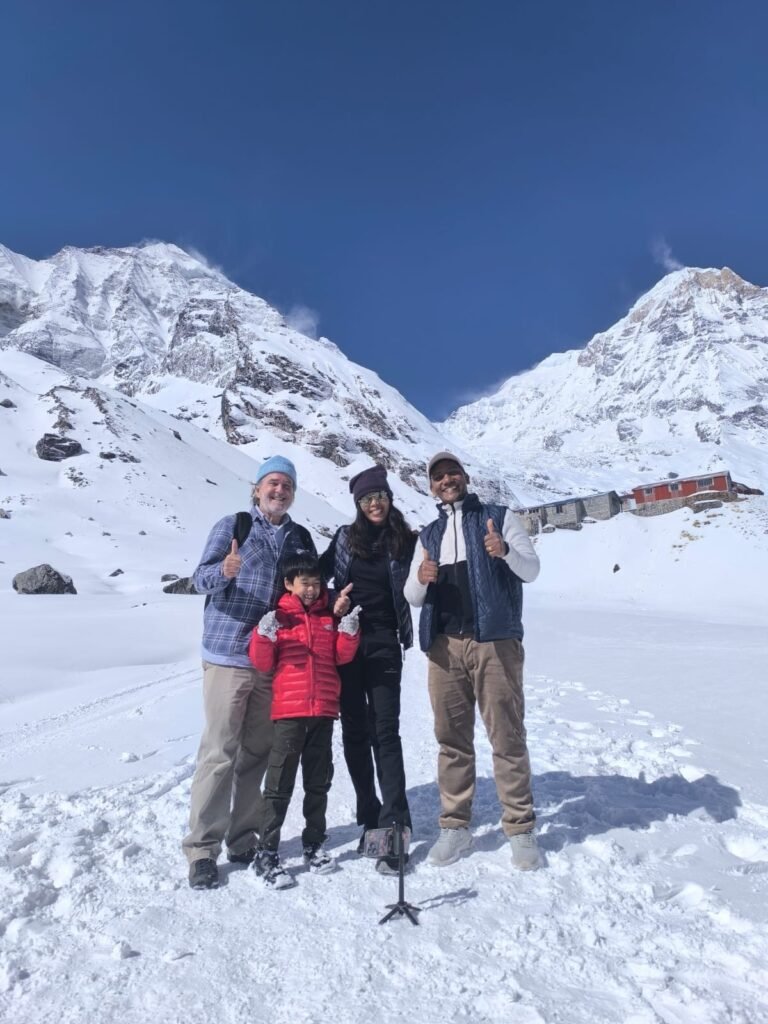
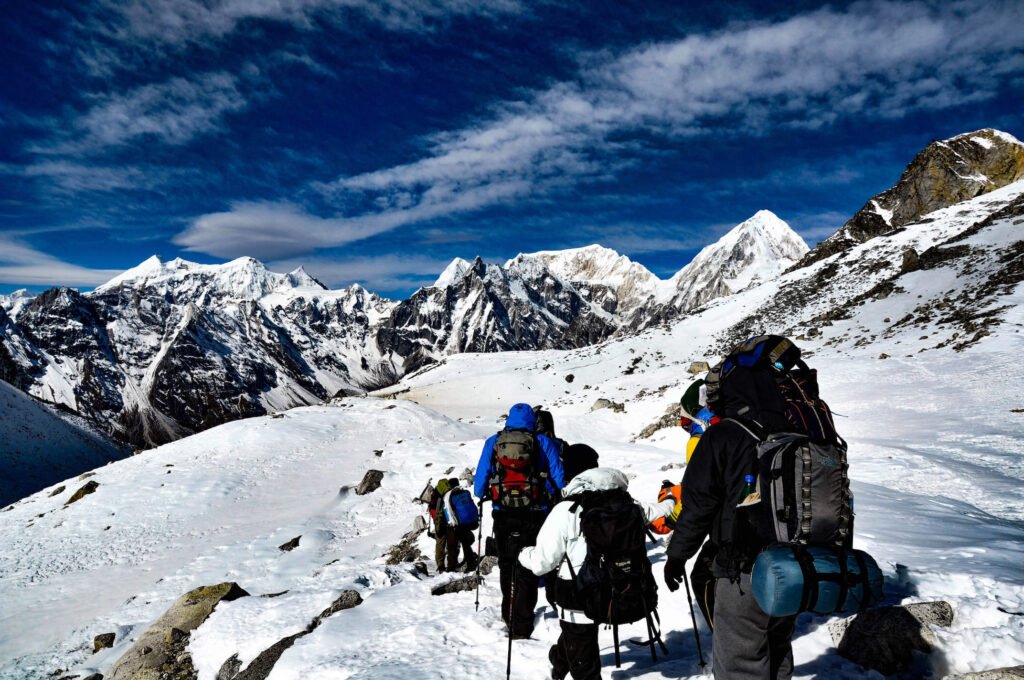
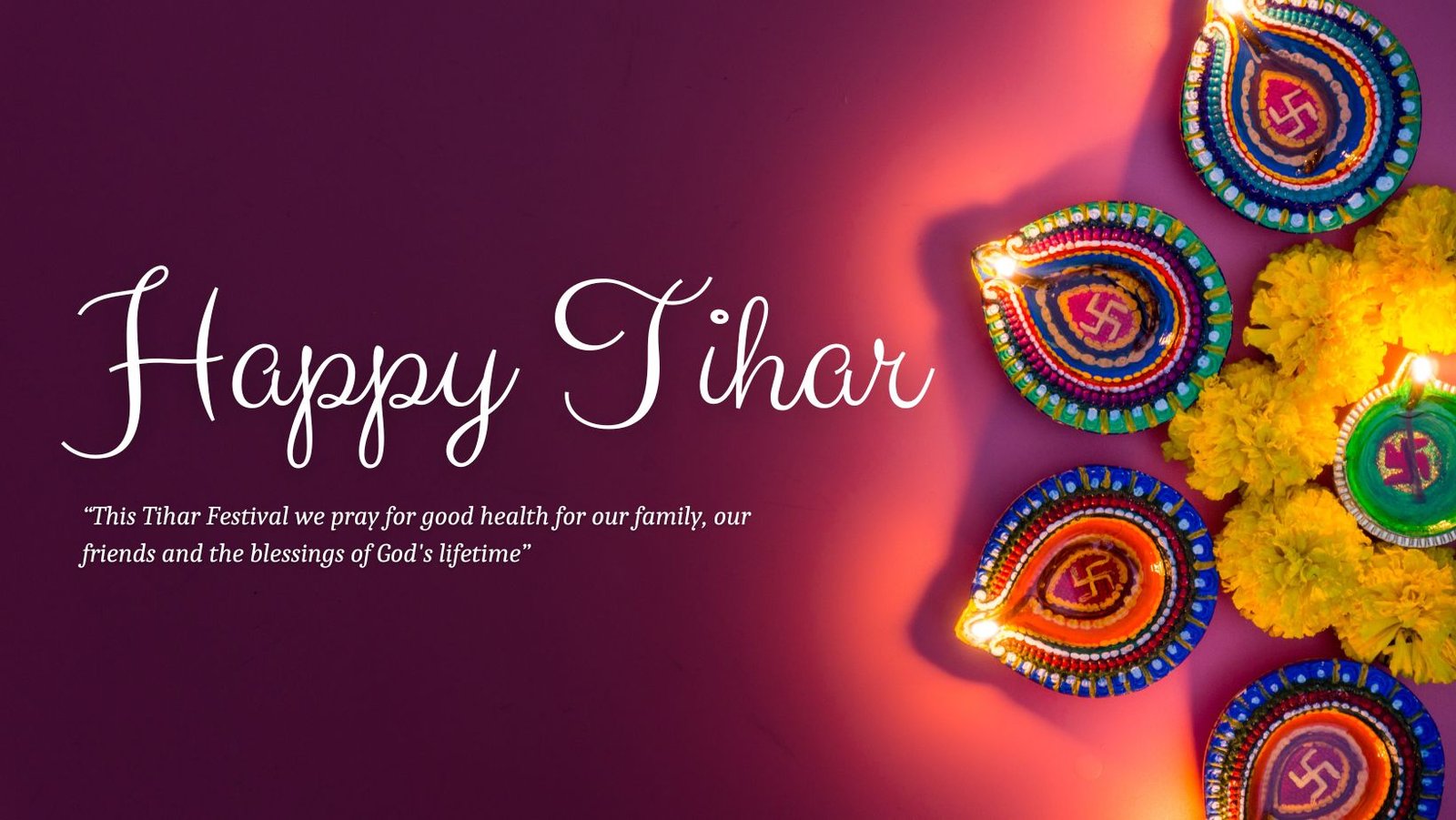
There are no reviews yet.